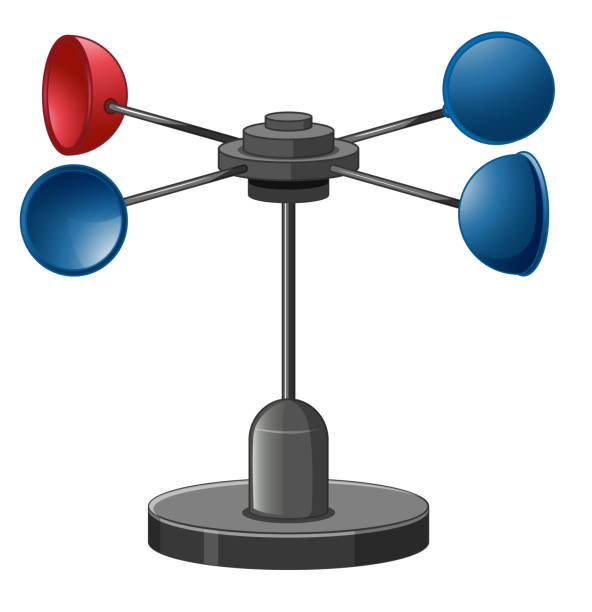All You Required to Learn About Anemometers: Exactly How They Work, Why They Issue, and Where to Use Them
Anemometers, however often ignored in the realm of scientific instruments, play an essential role in various areas, supplying valuable insights right into wind rate and airflow patterns. As we dive right into the ins and outs of anemometer modern technology, we will certainly reveal the internal workings of these gadgets, their importance, and the key considerations when picking the ideal anemometer for details applications.

Anemometer Basics
An essential tool used to measure wind rate and direction, the anemometer plays a critical role in meteorology and various markets. An anemometer normally consists of three or four mugs that turn in the wind, a vane that directs into the wind, and sensing units to track the movements or turnings. By calculating the rotations or activities over a specific amount of time, the anemometer can figure out wind rate. The vane aids determine wind instructions by directing into the wind, supplying valuable information for weather forecasting, aviation, maritime procedures, ecological tracking, and wind energy applications.
There are numerous types of anemometers available, including cup anemometers, vane anemometers, hot-wire anemometers, and sonic anemometers, each with its distinct functions and applications. Mug anemometers are generally utilized for standard wind speed measurements, while vane anemometers are liked for directional dimensions.
Principles of Anemometer Operation
Building on the foundational understanding of anemometer essentials, the principles of anemometer operation clarify the technicians behind wind rate and instructions measurements. Cup anemometers, for instance, have 3 or even more cups that record the wind, triggering them to spin quicker as the wind speed increases. Hot-wire anemometers depend on a warmed cable that cools down as wind passes over it, with the price of cooling down figuring out the wind speed.
Value of Anemometers
The importance of anemometers in meteorology and different markets can not be overstated. Anemometers play an important function in gauging wind rate and direction, providing important data for climate forecasting, climate research studies, environmental tracking, and air travel procedures. Meteorologists depend on anemometers to collect exact wind information, helping them comprehend weather condition patterns, predict tornados, and problem timely cautions to the public. In markets such as construction, farming, renewable resource, and maritime procedures, anemometers are a knockout post utilized to optimize procedures, ensure safety and security, and increase efficiency. Wind ranch operators make use of anemometers to examine wind problems and make best use of electrical energy production from wind generators. In the maritime industry, anemometers aid ship navigation by supplying real-time wind details to captains, assisting them make educated decisions to guarantee safe trips. Overall, anemometers are important tools that add significantly to safety, performance, and notified decision-making in meteorology and a variety of industries.
Applications Across Various Industries
In the eco-friendly power sector, anemometers play a crucial function in examining wind conditions for wind ranch positionings, making sure ideal power production. Industries like construction and mining utilize anemometers to keep track of wind rates, essential for safety and security procedures, specifically when functioning at heights or in open-pit mines where strong winds can posture dangers. In farming, anemometers assist farmers in managing crop splashing by supplying real-time data on wind speed to avoid drift.

Picking the Right Anemometer for Your Needs
For general objectives, a cup anemometer is suitable for measuring wind speed, while a vane anemometer gives wind instructions data. Hot-wire anemometers are suitable for reduced airspeed dimensions, and ultrasonic anemometers use high precision and durability.

Conclusion
In final thought, anemometers play an essential duty in gauging wind rate and instructions throughout various sectors. Recognizing the principles of anemometer operation is essential for selecting the appropriate gadget for details demands. From weather forecasting to aeronautics, anemometers are crucial devices for ensuring and gathering precise information safety and security in different applications. When picking the most appropriate device for gauging wind problems., it is crucial to think about the importance of anemometers in order to make informed decisions.
There are different types of anemometers available, consisting of mug anemometers, vane anemometers, hot-wire anemometers, and sonic anemometers, each with its special functions and applications. Mug anemometers are frequently utilized for standard wind speed dimensions, while vane anemometers are chosen for directional dimensions. Hot-wire anemometers are suitable for reduced airspeeds, and sonic anemometers are excellent for high-precision dimensions in research and commercial settings.Building on the Full Article fundamental understanding of anemometer basics, the concepts of anemometer operation illuminate the technicians behind wind speed and instructions measurements. For basic purposes, a mug anemometer is suitable for gauging wind speed, while a vane anemometer gives wind instructions information.
Comments on “Specialist Tips for Calibrating Your Anemometer for Optimum Performance”